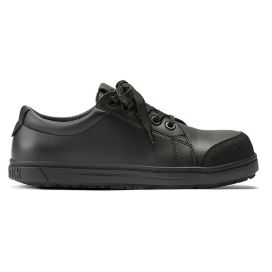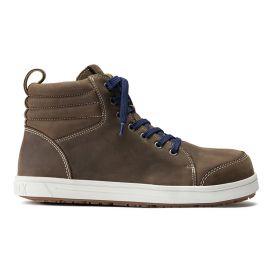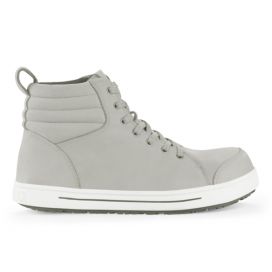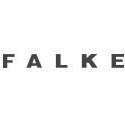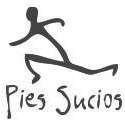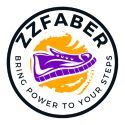No products
Prices are Management included
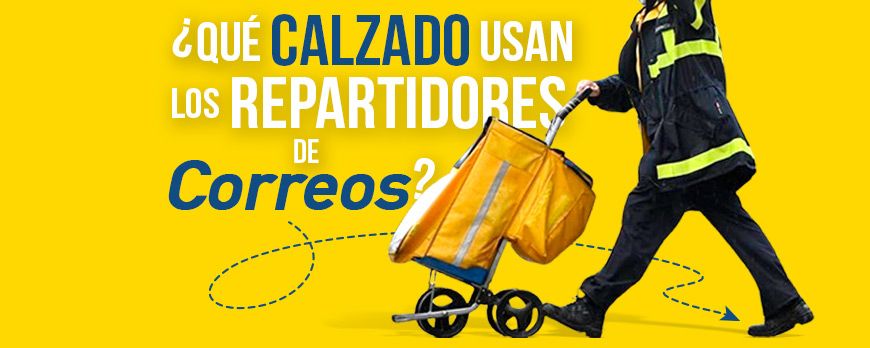
What SHOES do postal delivery workers wear?
This August, while having coffee with Ángel in our usual bar, I was watching a group of postal workers having breakfast next to us.
Looking at their feet, I noticed their safety shoes: heavy, stiff, suffocating.
And the image of these men and women delivering on foot through the streets came to my mind.
Seville in the middle of August, the sun is beating down like a ball of fire and the city turns into a giant oven.
There is no shade, no street that can escape the asphyxiating heat.
Imagine walking in that hell, dragging a shopping trolley and wearing shoes that make your feet feel as heavy as if you were carrying an anvil strapped to them.
They bake, they don't breathe and every step reminds you that those shoes are there to mistreat your feet, to mistreat you.
How did companies force these men and women to wear these Safety Shoes?
We talk about welfare at work, about taking care of the worker, but then they put these barbarities on them that destroy their feet.
Then we complain about sick leave, but who puts up with that?
Conventional safety footwear, with its steel toecaps and almost inflexible soles, may seem like a good idea in theory, but in practice it becomes hell for those who have to wear them for hours on end, and worse, walking the hot streets of Seville in the middle of summer.
The footwear industry has evolved in recent years, and the consequences are evident with the resurgence of new barefoot footwear brands.
But what about Safety Shoes?
Feet are the foundation of our bodies, and when you squeeze them into rigid footwear, the impact is felt everywhere: on the back, on the knees, and of course, on the feet themselves.
But it's not just about discomfort; continued use of this type of footwear can lead to more serious problems.
We're talking about bunions, hammertoes, plantar fasciitis, ankle pain, metatarsalgia, compressed toes, weakened plantar arch...
...even simple blisters and spurs. Sound familiar?
It's not uncommon for postal delivery workers (and many other workers) to feel like they've run a marathon with rocks in their shoes at the end of the day.
Now.
Imagine if postal workers had a choice between those heavy safety shoes and a barefoot option that complied with protection regulations.
An option that would not only protect their feet, but also allow them to:
- walk naturally,
- reduce the risk of injury
- and, most importantly, feel more comfortable in their daily lives.
We are not talking about a whim, but an investment in health and wellbeing.
Well, that option exists.
Take a look at what some of those who have used it have to say:
"A marvellous work boot that respects the shape of the foot and does not oppress at all. Logically it is heavier and stiffer than any minimalist shoe, but it fully meets the expectations of protection and comfort. The price and the insoles are a bit hard and stiff and I changed them for a Xero with a foot shape. Now they are 100% great."
"Bearing in mind that these are safety boots and that they have to comply with certain regulations and tests, they are great. They can't be compared to minimalist footwear for other uses, it would be unfair. However, within the category of safety boots they are perfect, flexible, flat sole, toe space and light compared to other safety shoes/boots. However, the original insole is best removed and a normal thin one put in."
"When we passed the invoice to the company they found them a bit expensive for safety boots although for my partner and I they are one of the best safety boots we have worn. They are comfortable, spacious and comply with the regulations. We can't ask for more".
We can no longer look the other way.
Companies need to rethink the type of footwear they impose on their employees.
It's not just about complying with safety regulations, it's about understanding that a worker who feels good performs better, is less likely to get injured and, above all, works more comfortably.
So the next time you see those postal delivery drivers or any worker wearing those safety monsters, remember that it doesn't have to be that way.
There are alternatives, and change starts here:
Effectiviwonder.
Health starts with your feet.
Antonio Caballo
Dejar un ComentarioDejar una respuesta
Blog categories
- Running Technique
- Shoes Review
- Scientific studies
- Nike and minimalist shoes
- Morton neuroma
- Bunions
- Podiatrists' opinion on...
- Claw toes, crowded toes,...
- Flat feet
- Runner's injuries, runner's...
- Sprained feet, ankle sprains
- Footwear for wide feet or...
- Heel and back pain
- Children's feet and...
- Circulation and bone...
- Knee pain, osteoarthritis,...
- Plantar fasciitis
Últimos Comentarios
Fernando Capellán
Do podiatrists who criticize barefoot footwear...Fernando Capellán
That Vivobarefoot lawsuit… and what happened nextLorena Cortés
This is what Nike did to Nadal's footFernando Capellán
They call it ugly... but everyone will...



